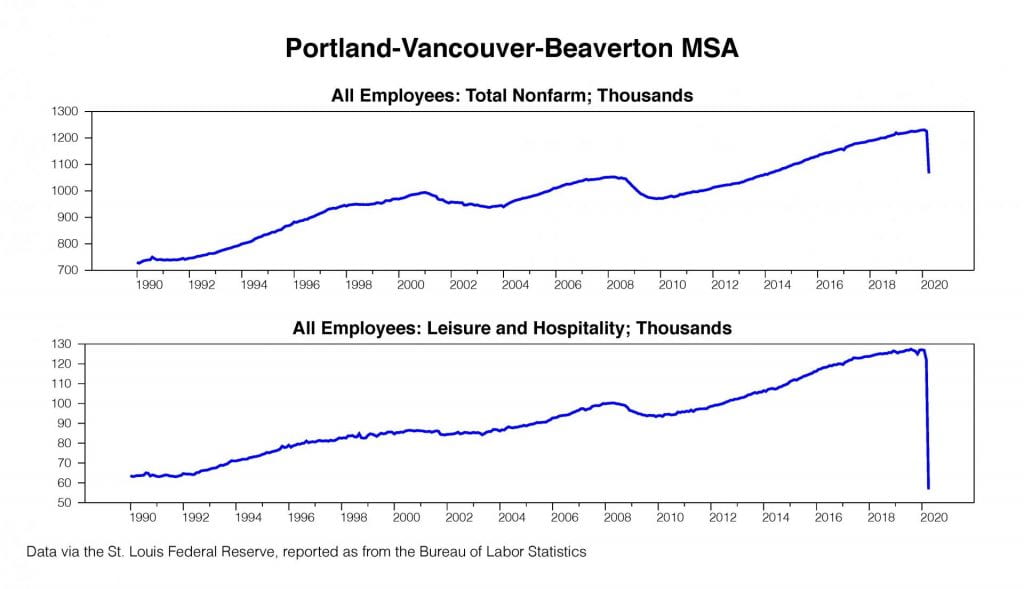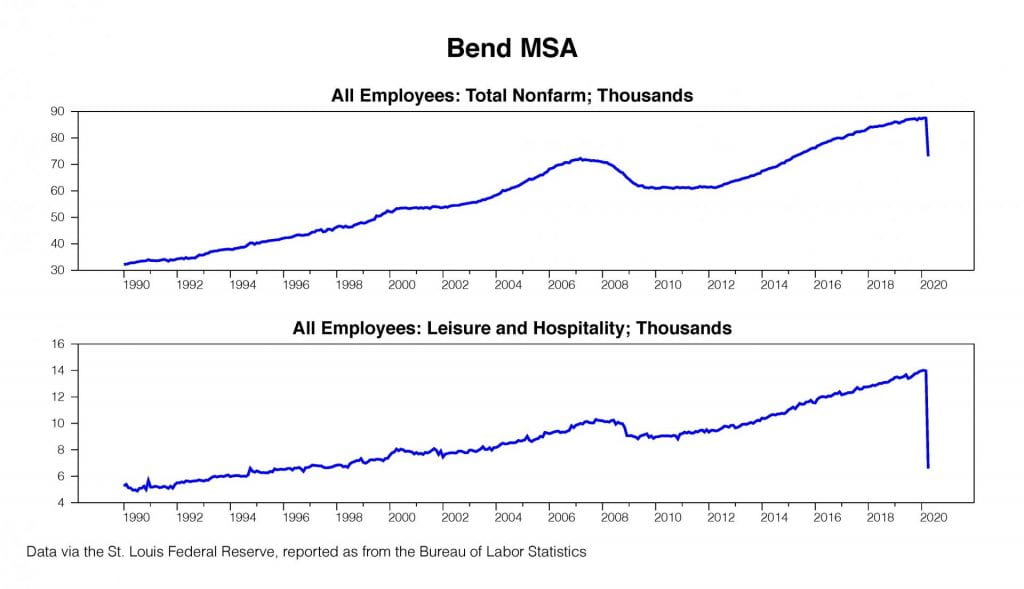This is the University of Oregon State of Oregon Economic Indicators for April 2020. The release date June 8, 2020. Special thanks to our sponsor, KeyBank
Link to full report (with charts!) here.
This is what a “sudden stop” looks like in the data. The Oregon Measure of Economic Activity plummeted to -14.7 in April while the moving average measure, which smooths out the volatility, fell to -5.13; both measures indicate below average growth for the Oregon economy. Highlights of the report:
- No major sector made a positive contribution to the measure. Widespread and deep layoffs throughout the economy impacted the services sector particularly severely. Many of those layoffs will be temporary; employees are already returning to work with much of the state in the initial stages of reopening.
- The University of Oregon Index of Economic Indicators fell 3.9%, extending the steep decline of the previous month. The details are interesting.
- Factors driving the decline were as might be expect, with initial unemployment claims, employment services (temporary help) payrolls, hours working in manufacturing, core capital goods orders, and consumer sentiment all driving the index down.
- The Oregon weight-distance tax collected and Oregon home building permits, however, remain resilient; these indicators typically decline in a recession.
- We should carefully watch what happens in the housing markets in the coming months. Housing tends to be a leading indicator and if it remains a strong sector we would expect the recession to be fairly short-lived.
Economic activity came to a sudden stop in an effort to slow the spread of Covid-19. We should expect a sharp short-term bounce in the data in the coming months as the economy reopens. Longer-term, however, the recovery to the past peak of activity will be slow and choppy as the economy adapts to the virus.
Media Contacts:
Tim Duy – 541.346.4660 (w)






